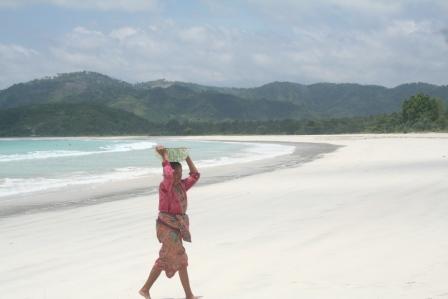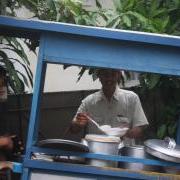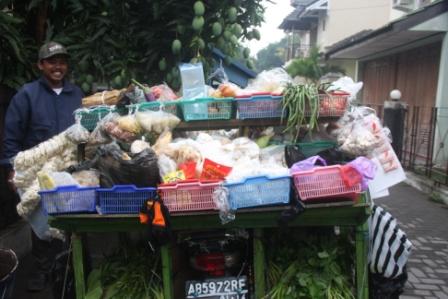Project Year
2009
Region(s)
Southeast Asia
Country(ies)
Indonesia
Project Description
This study will explore the practice of poor people in Yogyakarta, Indonesia to protect against theft, fraud and other form of risk. Although the underlying protection processes are similar, the ways in which household smooth consumption are highly contextual, i.e. depend on the particular institutional, social and economic context they live in. Specifically, the study will describe what practice commonly observed in the poor household to protect against theft, fraud, and other form of risk; what type of assets held; and analyze factors determine the type of assets held. This research improves our understanding on the income and consumption smoothing behavior of the poor.
Researcher(s)
Catur Sugiyanto, Sri Yani Kusumastuti, Duddy Roesmara Donna
About the Researcher(s)


Sri Yani Kusumastuti is currently a doctorate student in the doctoral program in Economics, Faculty of Economics and Business, Gadjah Mada University, Yogyakarta. She received her Magister Science (MSi), Graduate Program in Economics and Development Studies, Faculty of Economics and Business, Gadjah Mada University, in 1995.

Duddy Roesmara Donna has a Master’s degree Master of Science in Economics from Gadjah Mada University in 2006. His major was Islamic Banking. He is currently a researcher and trainer at Center of Economic and Public Policy (PSE-KP UGM) Gadjah Mada University.
Synopsis of Research Results
 This study is an empirical investigation of asset accrual and depletion strategies
used to achieve consumption smoothing among the poorest household in Yogyakarta, Indonesia.
Being able to smooth consumption reflects an important dimension of well-being as
it reflects people’s capacity to satisfy their basic needs in the present and to anticipate
and prepare for future needs, thereby managing risk and reducing destabilization.
Poor households in Yogyakarta face similar risks and shocks to those experienced
by households elsewhere (Newhouse, 2005). However, this study is designed to compare
smoothing strategies in Yogyakarta across job categories, regions, and genders in
order to clarify patterns and anomalies in this context that may guide private sector
investment and government policy.
This study is an empirical investigation of asset accrual and depletion strategies
used to achieve consumption smoothing among the poorest household in Yogyakarta, Indonesia.
Being able to smooth consumption reflects an important dimension of well-being as
it reflects people’s capacity to satisfy their basic needs in the present and to anticipate
and prepare for future needs, thereby managing risk and reducing destabilization.
Poor households in Yogyakarta face similar risks and shocks to those experienced
by households elsewhere (Newhouse, 2005). However, this study is designed to compare
smoothing strategies in Yogyakarta across job categories, regions, and genders in
order to clarify patterns and anomalies in this context that may guide private sector
investment and government policy.  In addition to the choice of income strategy, poor households make choices how they
will store and safeguard assets. For the world’s poor, low and variable incomes make
it difficult to build up a buffer through saving, and those households that do accumulate
savings face the additional obstacle of finding a liquid and safe store of value.
Due to high overhead and the institutional inefficiencies associated with banks, few
poor households have access to financial products and banking services. Informal community
savings schemes are suboptimal because they do not provide a safe value store for
households. Nonfinancial assets may present an alternative saving form, but it comes
with its own risks. These assets can easily be expropriated through theft and, in
the case of livestock, also drought; hence not secure stores of value. In addition,
assets often require investments that are large relative to the household’s income,
which makes it more difficult to use assets to ‘smooth’ income.
In addition to the choice of income strategy, poor households make choices how they
will store and safeguard assets. For the world’s poor, low and variable incomes make
it difficult to build up a buffer through saving, and those households that do accumulate
savings face the additional obstacle of finding a liquid and safe store of value.
Due to high overhead and the institutional inefficiencies associated with banks, few
poor households have access to financial products and banking services. Informal community
savings schemes are suboptimal because they do not provide a safe value store for
households. Nonfinancial assets may present an alternative saving form, but it comes
with its own risks. These assets can easily be expropriated through theft and, in
the case of livestock, also drought; hence not secure stores of value. In addition,
assets often require investments that are large relative to the household’s income,
which makes it more difficult to use assets to ‘smooth’ income.  Methodology: The research was conducted in five districts, including Kulon Progo, Bantul, Gunung
Kidul, Sleman and Yogyakarta City. The 125 respondents, representing 25 households
per district, consist of agricultural workers (farmers), fishermen, contracted workers,
non-contracted workers, peddlers or street vendors, and producers (craftsmen). The
sample is not differentiated based on gender, so men and women are not proportionately
represented. The empirical data is the basis for factor analysis, designed to identify
underlying variables, or factors, that explain the pattern of correlations within
a set of observed variables.
Methodology: The research was conducted in five districts, including Kulon Progo, Bantul, Gunung
Kidul, Sleman and Yogyakarta City. The 125 respondents, representing 25 households
per district, consist of agricultural workers (farmers), fishermen, contracted workers,
non-contracted workers, peddlers or street vendors, and producers (craftsmen). The
sample is not differentiated based on gender, so men and women are not proportionately
represented. The empirical data is the basis for factor analysis, designed to identify
underlying variables, or factors, that explain the pattern of correlations within
a set of observed variables. Ex-post Responses to Insufficient Income: Workers borrow and lend money, invest in assets, and store savings in different
ways across job categories in Yogyakarta. This reveals variations in the level of
organization and trust within communities of workers, as well as in levels of job
security and in the need for working capital. Whereas borrowing money on a short-term
basis is common among street vendors and fishermen when they have an income shortfall,
farmers are more likely to sell assets in cases of shortfall, and non-contracted workers
seek higher-wage work.
Ex-post Responses to Insufficient Income: Workers borrow and lend money, invest in assets, and store savings in different
ways across job categories in Yogyakarta. This reveals variations in the level of
organization and trust within communities of workers, as well as in levels of job
security and in the need for working capital. Whereas borrowing money on a short-term
basis is common among street vendors and fishermen when they have an income shortfall,
farmers are more likely to sell assets in cases of shortfall, and non-contracted workers
seek higher-wage work.
--Photo #1: Cracker sellers income is dependent upon the number of beach visitors. Photo by Catur Sugiyanto.
--Photo #2: The farm worker only has seasonal jobs; his income is suceptible to weather. Photo by Catur Sugiyanto.
--Photo #3: The porridge seller does not have any collateral for borrowing to the formal bank. Photo by Catur Sugiyanto.
--Photo #4: The vegetable seller faces income shock when women helps their neighbor in preparing food for a party. Photo by Catur Sugiyanto.
Link to their working paper: Managing Risks: How do Poor Households Smooth Their Income and Consumption? (An Examination of Poor Households in Yogyakarta, Indonesia)



